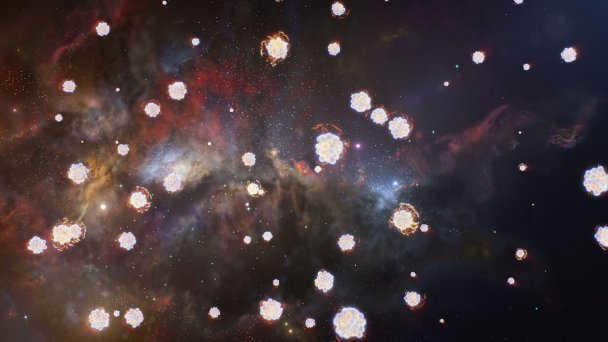
Using the largest telescope in the world, scientists have made an incredible discovery – they have found evidence of explosions from the original stars in the Universe. This groundbreaking finding allows researchers to gain insight into the characteristics of these stars that burned billions of years ago, according to Anatoly Glyantsev, a science columnist for Forbes.
For the first time ever, astronomers have detected gas clouds that were left behind after the explosions of the earliest stars in the cosmos. These stars exploded over 13 billion years ago, when the Universe was still in its infancy.
Dawn’s Minutes
The dawn of the universe occurred approximately 13.7 billion years ago. In a matter of minutes, atomic nuclei were formed, consisting primarily of hydrogen and helium, along with small traces of lithium, beryllium, and boron. At this point, no other chemical elements had yet come into existence.
These particles were drawn together by gravitational forces, causing matter to gather and form clouds, which would later become the precursors of galaxies. Within these clouds, gravity continued to pull matter together, resulting in the formation of denser clumps. Some of these clumps contracted to such an extent that they initiated thermonuclear reactions in their cores, transforming hydrogen into helium and helium into heavier elements. These were the first stars, which erupted into existence within the first billion years of the universe’s existence, although the exact timing of this event is still a subject of debate. Some calculations suggest that it occurred between 250 to 350 million years after the Big Bang. This era is often referred to poetically as the cosmic dawn.
Every star eventually exhausts itself and fades away. A portion of its substance is conserved within a compact stellar residue. The nature of this residue, whether it becomes a white dwarf, a neutron star, or a black hole, depends on the mass of the initial celestial body. The rest of the matter is dispersed throughout the cosmos and acts as the building blocks for the emergence of fresh stars.
How many cycles of this cycle have occurred today? Not many at all. The majority of stars currently in existence, including the Sun, are believed to belong to the third generation. A small number of ancient stars appear to be second generation. At least, that’s what their chemical composition indicates. Second-generation stars must have a very low abundance of elements heavier than helium. After all, the material they formed from has only undergone nuclear fusion once – as part of the first generation stars. This sets them apart from the Sun and other celestial bodies, whose matter has undergone fusion twice.
Well, first-generation stars would have consisted entirely of hydrogen and helium. Unfortunately, there is no chance of any of these elder statesmen surviving to the present day.
To achieve stardom
Not every aggregation of matter held together by gravity has the ability to emit light. In order for thermonuclear reactions to commence, the internal temperature and pressure must reach extremely high levels. For instance, the temperature at the core of the Sun is 15 million degrees Celsius.
As a future star contracts due to its own gravitational force, the temperature and pressure at its core intensify. However, this pressure can counterbalance the compressive gravitational force, halting the contraction before thermonuclear reactions can initiate. This is the reason why planets like Jupiter, composed mainly of hydrogen and helium, fail to transform into stars.
In order for the contraction to persist, the gravitational force – and therefore the mass – must be substantial enough. The least massive known stars have a mass equivalent to approximately 10% of the Sun’s mass. In general, the majority of contemporary stars have a lower mass compared to our own star, although it is far from being a record holder.
However, during the cosmic dawn, the Sun would not have had any opportunity to transform into a star. The compression of protostars of solar and pre-solar masses ceased well before the conditions in their core reached the “thermonuclear threshold”. The reason for this is that the primary matter was composed solely of hydrogen and helium, without even the slightest trace of cosmic dust. It is this dust that enables compression through a subtle physical phenomenon that we will not delve into.
Ephemeral Titans
Therefore, during the initial era, various masses of protostars emerged, but only the most substantial among them evolved into stars. The lower threshold for star mass was in the tens of solar masses, and these colossal celestial bodies have now become exceedingly rare. On the other hand, the upper limit, as per certain calculations, could reach up to a thousand times the mass of the Sun. In the present day, the formation of such a star is simply impossible as the onset of thermonuclear reactions would occur much earlier.
It appears that the initial generation of stars possessed a great deal of uniqueness, and astronomers are highly interested in observing them. However, this presents a dilemma. The larger the star, the more powerful the thermonuclear reactions become, causing it to burn out at an accelerated rate, despite having abundant fuel. Theoretically, a star with 10% of the sun’s mass could endure for trillions of years. The sun itself has enough “fuel” for 10 billion years (half of which has already elapsed). Nevertheless, the original colossal stars were destined to burn out within a few million years, ultimately resulting in their explosive demise as supernovae.
Reflecting on the past
Traveling across intergalactic expanses consumes an immense amount of time, even for light. When we observe a galaxy situated a billion light years away, we are essentially witnessing its state from a billion years in the past, when the light was originally emitted. As we peer into the vastness of the cosmos, we are effectively peering into the past.
The challenge lies in the fact that the initial stars ceased to exist an incredibly long time ago: over 13 billion years in the past. It is only recently, thanks to the advanced orbiting telescope known as “James Webb,” that astronomers have been able to detect galaxies whose light was emitted during the cosmic dawn. However, determining the true nature of these beams is a complex task. They could be a combination of starlight and radiation originating from a quasar, which is a supermassive black hole surrounded by a cloud of matter that is falling onto it. These distant galaxies appear as minuscule, blurry specks, with no discernible details. While astronomers may eventually be able to unravel them and identify individual stars, it is unlikely to occur within this century.
Stars are celestial bodies that consist of giant spinning balls of hot gases. They generate immense quantities of energy, such as heat and light, which they radiate out into space as they illuminate. They exhibit significant variations in their dimensions (for instance, Betelgeuse in the Orion constellation is 800 times larger than the Sun) as well as in their luminosity. The appearance of stars varies according to their age; blue stars are youthful and fiery, while red stars are aged and temperate. On the other hand, orange and yellow stars, which include our very own Sun, are in their prime, middle-aged, and moderately warm.
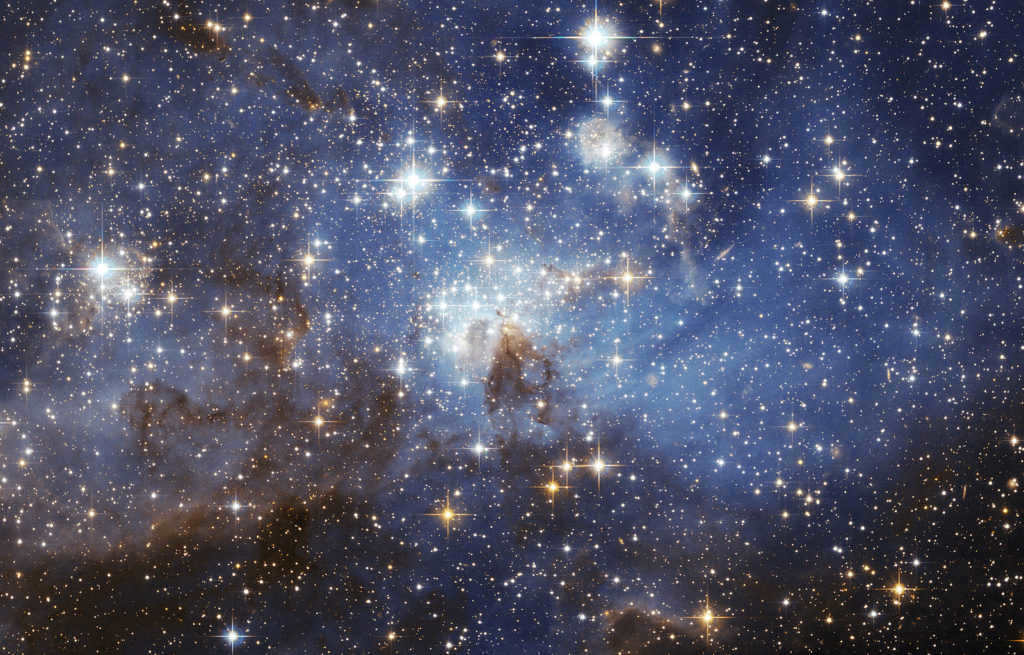

A region in the Large Magellanic Cloud where stars are being formed
Author: ESA/Hubble [CC BY 4.0 (https://creativecommons.org)]
Formation of Stars
The birth of a star occurs when a nebula, a cloud of dust and gas in space, gets compressed by the force of gravity, resulting in the formation of a dense mass known as a protostar. It is believed that shock waves emitted by a dying star in close proximity can trigger this process. As the protostar becomes increasingly hot, it starts generating its own energy within its core. Over time, the gas and dust surrounding the protostar dissipate. In some cases, a rotating disk composed of gas and dust may encircle the nascent star, potentially serving as a breeding ground for future planets.
Main-sequence stars
Main-sequence stars, such as our Sun, go through a phase of their life where they produce vast amounts of energy. This energy is generated when hydrogen atoms in the star’s core combine to form helium at incredibly high temperatures. After a few billion years, when the hydrogen fuel begins to deplete, the star undergoes a transformation into a red giant. Unlike an explosion, the red giant sheds its outer layers, creating a planetary nebula with a white dwarf at its center. Eventually, the white dwarf fades away and cools off, becoming a black dwarf.
Supergiants and supernovae
Every single star is formed within nebulae and transforms into protostars. Only a small number of large stars evolve into supergiants. Betelgeuse serves as an illustration of a red supergiant, while Rigel (also located in the Orion constellation) is an example of a blue supergiant. Eventually, a supergiant undergoes a massive explosion known as a supernova. This cataclysmic event marks the end of its existence as it either collapses into a black hole, an extremely dense region of space where even light cannot escape its gravitational pull, or transforms into a neutron star.
The Crab Nebula: the remains of a star that exploded in a supernova event
![Crab Nebula Author: NASA, ESA, J. Hester and A. Loll (Arizona State University [CC BY BY]. Loll (Arizona State University) [Public domain]](/wp-content/uploads/images/chto-ostaetsja-posle-vzryva-zvezdy_5.jpg)
The Crab Nebula is the remnant of a supernova star. It consists of slowly drifting dust and gas that has been expelled into space. Chinese astronomers witnessed and recorded the supernova event that created the Crab Nebula in 1054. At the core of the Crab Nebula lies the Crab Pulsar, a neutron star measuring 28-30 kilometers in length, which emits bursts of radiation.
The Horsehead Nebula
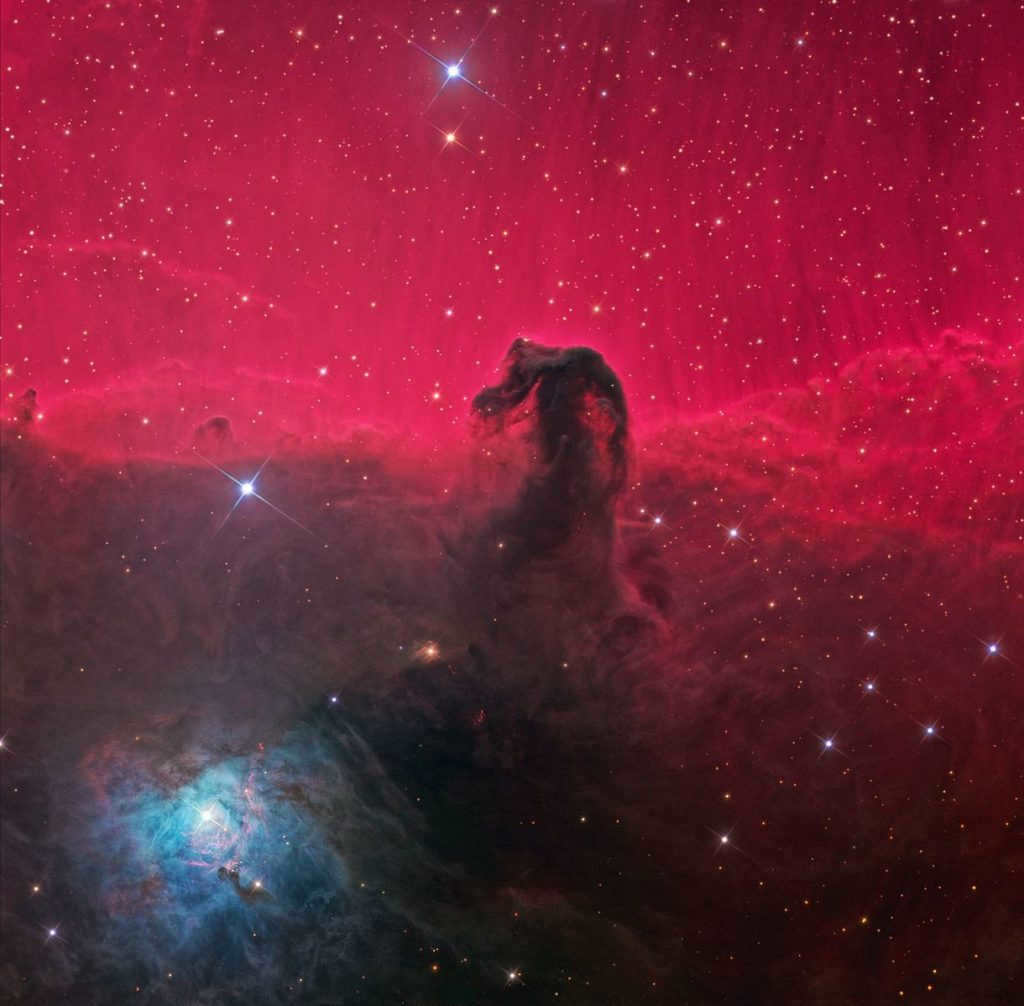
A nebula is a vast accumulation of dust and gas, representing the remnants of stars as they reach the end of their life cycle. Certain nebulae within our galaxy exhibit remarkable and intricate shapes, such as the Horsehead Nebula located in the constellation Orion. These nebulae serve as the building blocks for the creation of new stars, a process that requires millions of years to fully unfold. When observed through a powerful telescope, these nebulae present a dazzling and vibrant display of colors, transforming the surrounding space into a shimmering spectacle.
White Dwarf
Astronomers use the term “dwarfs” to describe sun-like stars because they are significantly smaller than red giants and supergiants. In fact, these stars are so small that a teaspoon of material from the Sun is as heavy as a spoonful of syrup. In approximately five billion years, the Sun will explode and transform into a red giant, shedding its outer layers. What will remain is a small, incredibly hot, lifeless core known as a white dwarf. These white dwarfs can be about 10,000 kilometers in diameter, possibly even smaller than Earth, yet they are incredibly dense. To put it into perspective, a teaspoon of material from a white dwarf would weigh an astonishing five tons.
A Neutron Star
Following a supernova explosion, what remains is a minuscule star, referred to as a neutron star, which measures no more than 25 kilometers in width. This makes it the tiniest kind of star in existence. To put its density into perspective, a mere teaspoon of a neutron star would weigh an astonishing billion tons. Neutron stars boast scorching temperatures, accompanied by immensely strong magnetic and gravitational fields. When they first form, neutron stars spin at velocities reaching several hundred times per second.
Hertzsprung-Russell diagram
The Hertzsprung-Russell diagram is a graphical representation that illustrates the correlation between luminosity, which is the amount of light emitted, and temperature for various categories of stars. Stars positioned at the uppermost part of the diagram exhibit greater luminosity, while stars situated on the left side of the diagram possess higher temperatures. In order to gauge the brightness levels, astronomers employ the Sun as a reference point.
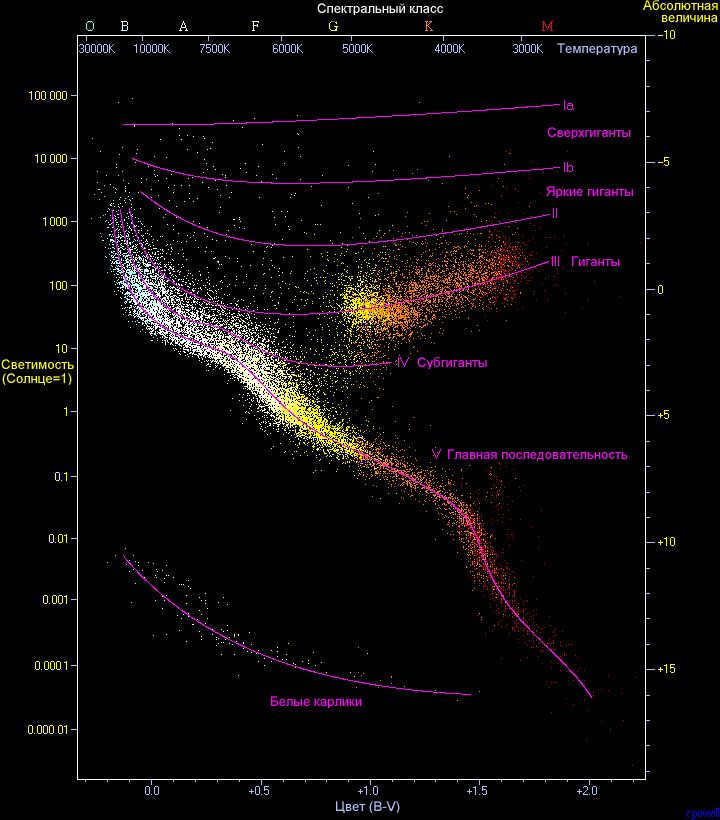
The Hertzsprung-Russell diagram, created by Richard Powell and Maxim Razin, shows the classification of stars based on their luminosity and temperature. It is a graphical representation that displays the relationship between these two properties. The diagram consists of a band that slopes from the upper left corner, representing hot and bright stars, to the lower right corner, representing cool and dim stars. This band is referred to as the “main sequence,” and the stars located on it are known as “main sequence stars.” Main-sequence stars are in a stable phase of their lifespan, where they undergo hydrogen fusion in their cores.
Not all stars in the observable universe are main-sequence stars. The ones located in the upper right corner are red giants, which are large, cold red stars. The stars in the left corner, on the other hand, are white dwarfs, which are relatively small and extremely hot.
Scientists have estimated that there are approximately 300 sextillion stars in the observable universe, which is equivalent to 3 followed by 23 zeros.
About 85% of all stars are red dwarfs, which are stars with less than half the mass of the Sun. However, none of these stars can be seen with the naked eye from Earth.
In the future, a white dwarf star will cool down to such low temperatures that it will cease to emit heat and light, transforming into a black dwarf.
Main-sequence stars, also known as stars that spend 90% of their lifespan radiating energy generated by the fusion of hydrogen into helium within their cores.
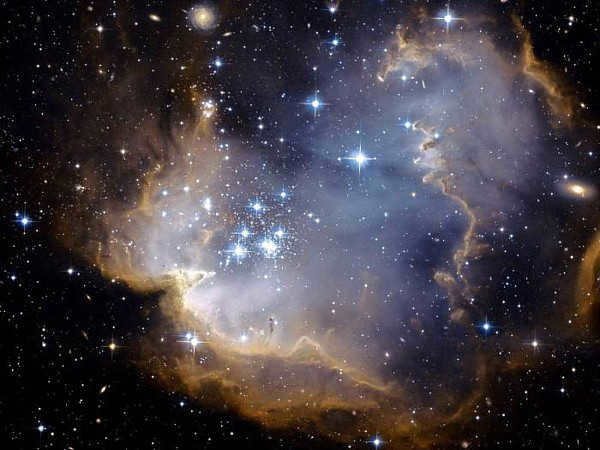
On numerous occasions, we have gazed up at the night sky on a balmy summer evening and marveled at the glistening specks that adorn it. Countless times, we have yearned to venture beyond Earth’s confines and witness firsthand the ethereal magnificence of the frozen cosmos. For centuries, the allure of the Universe has captivated humanity, compelling us to defy the constraints of gravity and push the boundaries of scientific knowledge.
The Universe is indeed a sight to behold. However, beneath its surface beauty lies a reality that is not as idyllic or secure as it initially appears.
The sun: the giver and taker of life
The Sun serves as the vital organ of our solar system. It functions as an enormous nuclear reactor, radiating a tremendous amount of energy that sustains the flourishing of life on our planet. This swirling sea of gas exhibits a captivating allure, but it also possesses a lethal nature.
The Sun’s exterior temperature soars to a scorching five thousand degrees Celsius, while its core can surpass temperatures in the tens of millions of degrees.
Emanating from the Sun are fiery loops of gas, a result of the planet’s electrical activity, extending thousands of kilometers into space. Though these prominences offer a visually stunning spectacle, they also emit copious amounts of radiation that our Earth’s magnetic field shields us from.
The amount of energy generated by a single prominence surpasses the combined energy of 10 million volcanoes found on Earth. Additionally, if the Earth were to pass through such a loop, there would still be plenty of space left.
In the event that airlines were to agree to offer interplanetary flights, it would require a duration of 20 years to reach the Sun.
The Sun is both the source of life and the eventual cause of death for our planet. Currently, countless life forms thrive on Earth due to the Sun’s energy. However, everything must come to an end. Eventually, the Sun will die and transform into a white dwarf. Even if it doesn’t engulf our planet, it will no longer emit sufficient light and heat to sustain life on Earth.
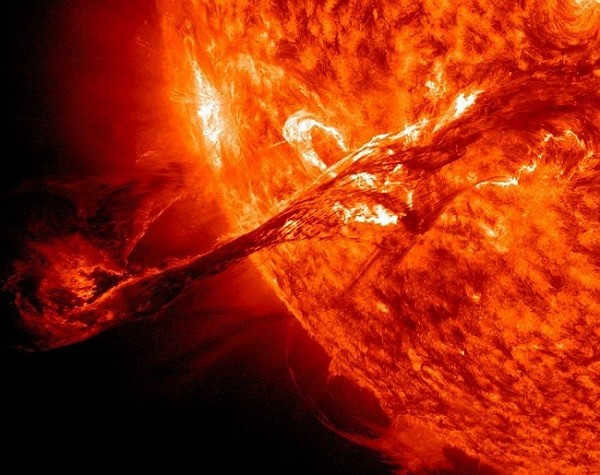
Comets: Deadly Messengers of Life
Comets serve as nomads within our vast universe, orbiting around stars. They present a stunning spectacle, with their tails capturing our attention. However, these tails consist solely of dust and vaporized ice, which have been heated by the radiant rays of the Sun.
Scientists support the notion that comets played a pivotal role in the emergence of life on our planet. Where there is water, life can thrive. It is hypothesized that comets, colliding with Earth during its formation, delivered water and biological matter that served as the fundamental building blocks for all life forms on our planet.
Nevertheless, present-day comets pose a perilous threat to our very existence. A collision with Earth by one of these celestial bodies could potentially extinguish life in all its diverse forms, forever.
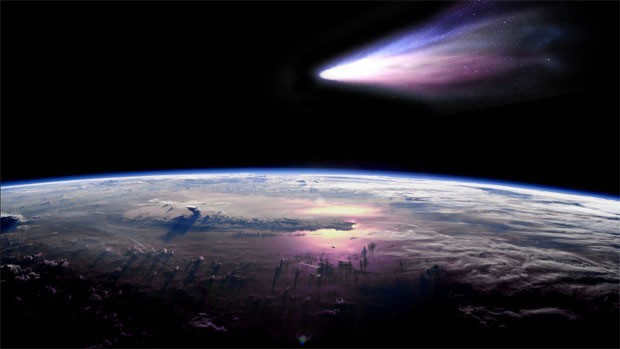
Malevolent Assassins: The Destructive Power of Asteroids
Asteroids, those wandering vagabonds of our solar system, are the remnants of deceased celestial bodies. These entities, possessing less mass than planets, exhibit irregular shapes and lack atmospheres, yet may harbor satellites.
An encounter with an asteroid can prove fatal for a planet, regardless of its size. Both minuscule and colossal, these space invaders pose a grave threat to humanity. While the detection of larger asteroids is somewhat easier, even if an extraterrestrial mass with a diameter exceeding three kilometers were to collide with our planet, it has the potential to wipe out an entire civilization.
Scientists posit that this very scenario is what led to the demise of the dinosaurs on Earth.
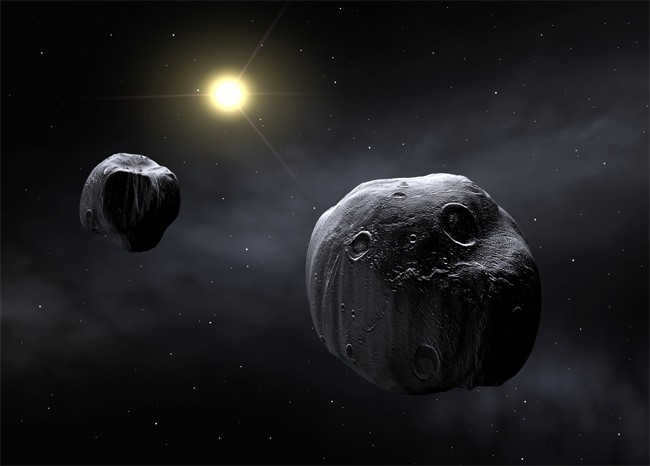
Supernovae – the end and the beginning
Stars are similar to humans in that they have a lifecycle, experiencing both life and death. When a star exhausts its fuel for nuclear reactions, it becomes unstable. This instability causes the star’s core to split, releasing a burst of deadly energy.
The death of a star is a remarkable and perilous event. The outer layers of the star and its radiation are expelled millions of kilometers into space. These lethal particles would obliterate any life in their path.
If a star explosion were to occur in close proximity to Earth, we would not be able to survive the catastrophic effects of the radiation on all living organisms.
However, within the vastness of the cosmos, nothing is discarded. Chaos itself adheres to an inherent structure. When a star undergoes a supernova explosion, it gives birth to fresh chemical elements. These particles serve as the fundamental components for the emergence of novel life forms. The calcium present in our skeletal framework, the iron coursing through our veins, and the air filling our lungs all originate from the remnants of a deceased star. Paradoxically, this stellar demise has engendered the genesis of vibrant new life forms.
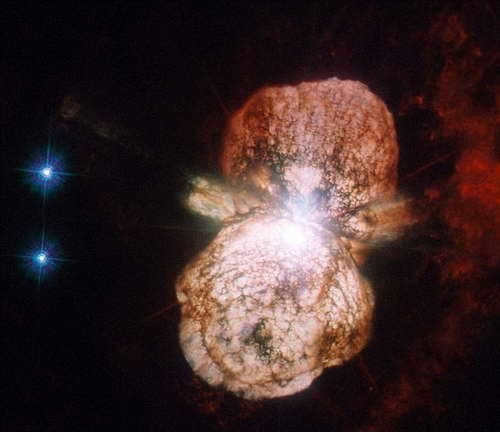
A black hole is an extraordinary gravitational force.
A black hole is the result of a massive dead star. Black holes are the most enigmatic inhabitants of the universe. The gravitational pull of this object is so immense that nothing can break free from its grasp, not even light. Scientists can only speculate about the contents of a black hole.
According to numerous theories, the inside of a black hole lacks time, space, or matter, and all the laws of physics cease to exist. Many individuals believe that a black hole engulfs everything in its path. However, this is not entirely accurate. There is a specific distance called the event horizon. Once you venture beyond it, nothing can escape the deadly clutches of the black hole.
There is a concept floating around that our entire galaxy might actually exist within the confines of an enormous black hole. However, comprehending this idea requires more than just a vivid imagination; it has the power to profoundly unsettle the mind.
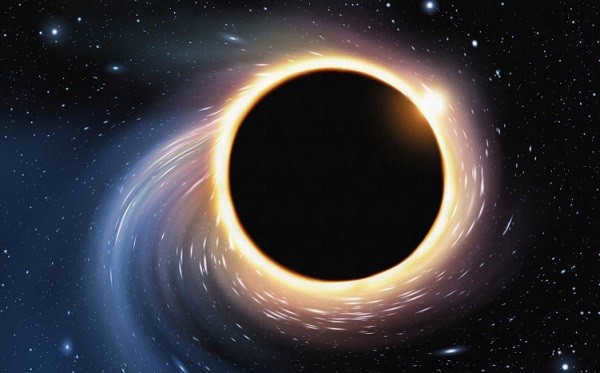
The enigma of a pulsar
Pulsars can be considered as distant relatives of black holes since they come into existence in a similar manner following the demise of a star. The stellar core undergoes such extreme compression that it gives rise to a tiny but luminous celestial body.
Despite their diminutive size, pulsars possess immense energy. They emit a higher amount of radiation compared to the Sun.
Pulsars rotate at an astounding speed, completing around 30 revolutions per second. The level of density is beyond comprehension, with just a teaspoon of matter weighing hundreds of millions of tons. Additionally, the magnetic field of a pulsar is billions of times stronger than that of Earth.
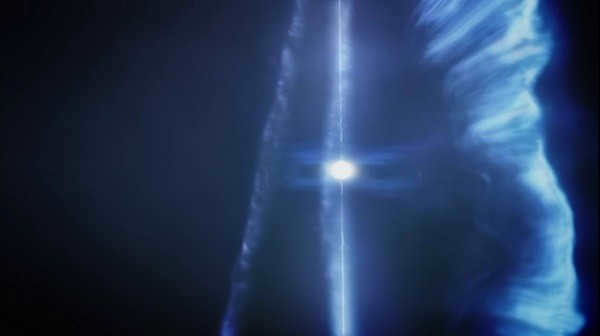
The Universe’s Nebulae: Where Frozen Music Abounds
Nebulae, those magnificent frozen clouds of cosmic gas and dust, offer a breathtaking spectacle. These celestial wonders can be aptly likened to a stellar nursery, as they possess all the essential ingredients required for the creation of new luminaries. All that remains is a cosmic push, delivered by the explosion of a star, to set them in motion.
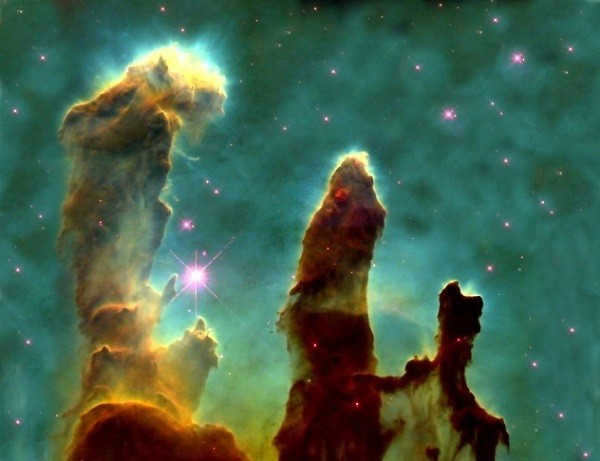
Nebulae are situated at immense distances from our planet – spanning thousands of light years. The magnitude of these numbers is so vast that it becomes challenging for our minds to grasp.
Nebulae can be rightfully acknowledged as the most colossal entities in the cosmos, as they can stretch across hundreds of light years in length.
Quasars: Glimpses into the Depths of Time
Quasars, the most ancient and potent entities in the cosmos, serve as a testament to the eons that have passed. These celestial marvels outshine even entire galaxies, radiating with a brilliance beyond compare. Situated within their cores resides a colossal black hole, dwarfing billions of suns in size. The energy emitted by quasars is truly mind-boggling, with some theories positing that they release a hundredfold more power than all the stars within our Milky Way galaxy, and all within a relatively confined expanse of space.
Traversing the vastness of the universe, a quasar hurtles through space at an astonishing velocity, clocking in at approximately 80% of the speed of light.
Quasars serve as portals to the bygone eras. Their radiant beams, after enduring millions of years of travel, finally reach our world, allowing us to observe the distant past. It is plausible that some of these quasars may have ceased to exist long before their light ever graced our presence.
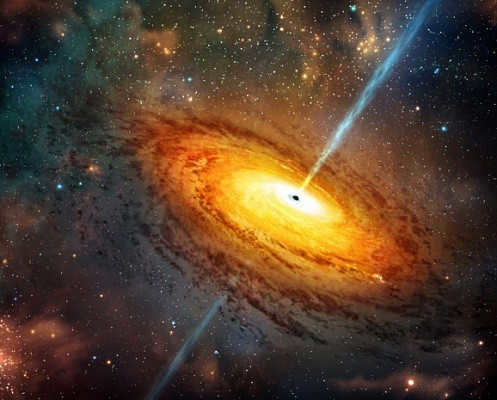
The cosmos is a sight to behold. It is captivating in its enigma, might, and vastness. What are we in comparison to the cosmic hierarchy? We are but insignificant ants or minuscule grains of sand.
Our solar system resides on the outskirts of the Milky Way galaxy, far removed from significant occurrences and current affairs. Even if it were to vanish in an instant, it would go unnoticed.
However, we hold onto the hope that humanity will uncover the secrets of the cosmos, encounter new celestial bodies, and etch its name in the annals of our Universe.
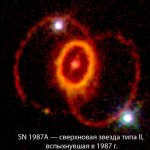
A supernova, also known as a supernova explosion, is the result of a massive explosion that occurs when a star reaches the end of its life cycle. This event releases an immense amount of energy and causes the star’s brightness to increase by billions of times. The outer layers of the star are expelled into space, creating a nebula, while the core undergoes a dramatic collapse and can either become a neutron star or a black hole.
Supernovae play a crucial role in the chemical evolution of the universe. During the explosion, heavy elements that were synthesized in the star’s core throughout its lifetime are scattered into space. These remnants then serve as the building blocks for the formation of protostars and planetary nebulae, which eventually give rise to new stars and planets.
The Earth emerged in a similar fashion, just like all the material that encompasses us and forms our existence, originated within the depths of stars, even preceding the birth of the Sun.
A supernova is an event that is nearly impossible to overlook – the brilliant burst of energy from the explosion is so powerful that it surpasses the luminosity of all the other stars within the galaxy.
Formation Locations
Firstly, let’s clarify the concept of a supernova star. It refers to a celestial event characterized by a massive explosion that occurs in outer space. This fascinating phenomenon can be observed in various galaxies, although it is relatively uncommon within our own Milky Way galaxy due to the presence of dust and gas that obstructs visibility. Johannes Kepler was the first to discover such an event in 1604, but at that time, telescopes were only capable of detecting the remnants of a star that had exploded over a century ago.
One notable example is the remnant of supernova SN 1987A, which was captured in an image taken by the Hubble Telescope and later published on May 19, 1994.
The silhouette of an enormous black hole
In the April of 2020, a consortium of observatories captured the inaugural depiction of a black hole. The photograph originates from the M87 galaxy, which houses a gargantuan black hole revolving at its core.
The distance to the periphery of the black hole measures 55 million light years.
Scientists have determined that the mass of the observed entity is 6.5 billion times the mass of our sun.
Presenting a quartet of daughters: the appearance of the spouse of basketball legend Kobe Bryant
A reality TV personality shed 8 pounds within three months following childbirth
No jutting cupboards: a practical built-in shelf for the bathroom
What are the prerequisites for the birth of a supernova star?
A supernova star is formed when specific changes take place in its central region. There are two main types of supernovae:
- Double star systems. Classical double stars are objects that are connected due to a shared center. One star gains matter from the other and becomes excessively massive. However, it lacks the ability to balance internal processes, leading to an explosion.
- The moment when a celestial body dies occurs when its fuel supply is depleted, causing a portion of its mass to enter the nuclear region and become dense, ultimately leading to its inability to withstand its own gravitational pull. This results in an expansion process and the subsequent explosion of the object.
The scale of stellar detonations
In order to gain a clear comprehension of the power behind supernova detonations, we can refer to the equation of mass and energy equivalence. As stated by this equation, each gram of substance harbors an immense quantity of energy. Consequently, 1 gram of matter can be likened to the explosion of an atomic bomb witnessed in Hiroshima. The energy emitted by a royal bomb is equivalent to three kilograms of substance.
Every moment in the depths of the Sun, 764 million tons of hydrogen undergo thermonuclear reactions and are converted into 760 million tons of helium. In other words, each second, the Sun emits energy equivalent to 4 million tons of material. Only a minuscule fraction of the Sun’s total energy actually reaches our planet, amounting to a mere two kilograms of mass. This is why it is speculated that the detonation of the Tsar Bomba could potentially be visible from Mars. Interestingly, the Sun supplies the Earth with several hundred times more energy than humanity consumes. To put it into perspective, in order to fulfill the annual energy demands of the entire modern human population, only a few tons of matter would need to be converted into energy.
Given the information provided, let’s envision a scenario where an ordinary supernova at its maximum output consumes a mind-boggling quadrillion tons of material. To put this into perspective, this amount of matter is comparable to the mass of a hefty asteroid. Furthermore, the overall energy released during a supernova event is equivalent to the mass of an entire planet or even a small star. Lastly, a gamma-ray burst expels an astounding amount of energy, equivalent to the mass of our Sun, in mere seconds or even fractions of a second during its existence!
What is the focus of the researchers?
The researchers are interested in understanding this phenomenon that occurs within a very short period of time. Despite its brevity, it provides valuable insights into the universe. For instance, one of these events confirmed the expansion property of the universe. Additionally, these studies have shed light on how these objects impact the distribution of elements in space. During the explosion, the celestial body produces a burst of cosmic debris, some of which may even collide with Earth.
Observing Mercury’s transit across the Sun
On November 11, the Washington Observatory in Washington, D.C., USA captured an image of the planet Mercury as it passed in front of the Sun.
Discovering Mount Fuji: a fascinating tourist’s guide
2020 will witness a double surge in weddings across the country: 02.02 and 20.02 – the enigmatic allure of the number 2
Happiness, divorce, and beyond: these behaviors are infectious, despite lacking any explanation
A small shadow cast by a planet aligning with Earth momentarily obscured a portion of the Sun’s surface. Astronomers anticipate the next transit of Mercury to occur in 2032.
Methods for Detecting Supernova Stars
Finding supernova stars can be a straightforward process. Scientists utilize specialized instruments for this purpose. Some tools are designed to observe visible light emissions following an explosion, while others are used to track X-rays and gamma rays. The Hubble and Chandra telescopes are commonly employed for imaging.
In July 2012, a new telescope was put into operation, specifically designed to focus on high-energy light streams. This telescope is known as the NUSTAR mission and it aims to search for collapsed stars, black holes, and remnants of supernova events. It is not necessary to be a specialist to contribute to scientific discoveries. In fact, an ordinary teenager discovered a supernova in 2008, and in 2011, a 10-year-old girl from Canada was able to repeat this observation.
The final stages of the life cycle of stars
The fate of stars is determined by their mass. High-mass stars consume their fuel at a rapid pace, resulting in a relatively short lifespan of a few tens of millions of years. On the other hand, low-mass stars can “burn” their fuel slowly, allowing them to exist for hundreds of billions of years. Consequently, the manner in which a star dies is influenced by its mass. The diagram below illustrates the different evolutionary paths of stars with varying masses.
Now, let us delve into the enigmatic processes that unfold during the concluding stages of the life cycle of different stars.
Supermassive stars
When a star weighing more than five times the mass of the Sun reaches the stage of a red supergiant, its core starts to contract due to the gravitational force. This contraction leads to an increase in temperature and density, triggering a new series of thermonuclear reactions.
Consequently, the largest and most massive stars burn out rapidly and undergo a supernova explosion.
During this dazzling supernova event, the release of energy is 100 times greater than the total energy emitted by the Sun throughout its entire lifespan. Following a supernova explosion, either a neutron star or a black hole remains, along with the matter ejected by the tremendous energy of the explosion. This ejected matter then serves as the building blocks for new stars.
One of our closest stellar neighbors, Betelgeuse, is destined to face such a fate, although the exact timing of its explosion remains unknown.
The mechanisms involved in the formation of supernovae are still the subject of ongoing research, leaving many uncertainties. Additionally, the remnants of the original star are also a matter of debate.
Betelgeuse is currently in the process of preparing for its impending explosion.
For this supermassive star, there are four potential outcomes:
- Low-mass supernovae result in the formation of a neutron star and gas.
- Higher mass supernovae lead to the creation of a black hole and gas.
- In the case of massive stars undergoing direct collapse, only a massive black hole remains without any other remnants.
- Following a hypernova explosion, only gas is left behind.
However, there are typically two primary options that are taken into consideration: neutron stars and black holes.
Neutron stars
Additionally, the force of gravity continues to compress the remaining matter, but at a certain point, the compression is halted by nuclear forces, resulting in the formation of a neutron star, also known as a pulsar.
A neutron star is an incredibly fascinating physical phenomenon. The core of a star that has undergone a catastrophic explosion undergoes compression – similar to the compression of gas in an internal combustion engine, but on a much larger and more efficient scale: a massive sphere with a diameter of hundreds of thousands of kilometers is compressed into a sphere measuring only 10 to 20 kilometers in diameter. The force of this compression is so immense that electrons collapse onto atomic nuclei, giving rise to the formation of neutrons – hence the name. The surface of a neutron star is characterized by exceptionally powerful magnetic fields and gravity.
It is difficult to predict what will remain in place of the cooled neutron star, and it is impossible to observe because the world is still too young for it.
The Formation of Black Holes
If a star has a mass greater than 30 times that of the Sun, the gravitational collapse continues even after it explodes as a supernova, resulting in the formation of a black hole. A black hole has a density equivalent to that of the Earth if it were compressed to a diameter of 5 centimeters. As a result, the gravitational force of a black hole tends to infinity. Even particles of light, with their limited speed, cannot overcome this gravitational force. This is why a black hole does not reflect light that falls onto it; instead, it absorbs it. This characteristic gives black holes their name.
Scientists speculate that the laws of physics do not apply in black holes, causing space and time to cease to exist. However, information is believed to remain in the form of holographic projections. The boundary that marks the edge of a black hole is known as the event horizon, which acts as a barrier between time and space. At the center of a black hole lies a singularity, which is a state of physical uncertainty. As black holes consume stars and nebulae, they continue to do so until they reach their capacity. At this point, they expel a massive stream of gas, forming a quasar that extends beyond the galaxy.
The width of a quasar exceeds the diameter of the entire solar system. Beyond the boundaries of galaxies, new stars and galaxies begin to take shape.
Stars of Moderate Size
Smaller stars, ranging from 0.4 to 3.4 solar masses, have a longer lifespan on the main sequence compared to their larger counterparts. However, once they exit the main sequence, they experience a much quicker demise in comparison to neutron stars.
A star similar to our Sun, which falls into the category of medium-sized stars, eventually reaches a point in its life where it can no longer contain its outer layers. These layers begin to shed, moving away from the core and causing the star to expand, eventually becoming a red giant. This expansion leads to changes in energy output, resulting in periods of instability characterized by fluctuations in size, surface temperature, and energy release.
Conversely, gravity works in opposition to the expansion, compressing the core and increasing its density. As the star expands, it reaches a tremendous size.
As the end approaches, the Sun will consume Mercury, Venus, and eventually Earth. Witnessing a sunrise in the final million years will be an awe-inspiring spectacle. The Sun will dominate the entire horizon, scorching everything in its path.
The destiny of the stellar core hinges entirely on its initial mass – the central region may ultimately become:
- a white dwarf (for low-mass stars);
- a neutron star (pulsar), if the stellar mass in the later stages of evolution surpasses 1.38 – 1.44 times the mass of the Sun;
- a black hole, if the stellar mass exceeds 2.5 to 3 times the mass of the Sun.
When the star runs out of fuel for iron production, it will shed its outer layers and distribute elements across the universe. The core will then collapse into a compact and dense object known as a white dwarf, approximately the size of Earth. This resulting white dwarf will possess an extraordinary density, millions of times greater than its original form.
Located in the Cat’s Eye Nebula, the white dwarf serves as a common fate for the majority of stars, including our Sun. It will persist for billions of years, while planets continue to orbit around this lifeless remnant.
White dwarfs currently account for 3 to 10% of the total number of stars in the Universe. They have a very high temperature, exceeding 20,000 K, which is more than three times the temperature of the Sun’s surface. However, their temperature is still lower than that of neutron stars. Due to their lower temperature and larger surface area, white dwarfs cool down at a faster rate, typically within 10^14 to 10^15 years. This implies that in the next 10 trillion years, when the Universe will be a thousand times older than its current age, a new celestial entity will emerge: a black dwarf, which is formed through the cooling process of a white dwarf.
Currently, there are no black dwarfs in existence. Even the oldest cooling stars have only lost a maximum of 0.2% of their energy. For a white dwarf with a temperature of 20,000 K, this would mean a decrease in temperature to 19,960 K.
Low-mass stars
Currently, there is still uncertainty about the fate of lightweight stars once their hydrogen fuel runs out. Given that the age of the Universe is 13.7 billion years, which is not enough to deplete the hydrogen supply in these stars, current theories rely on computer simulations to understand the processes that take place in these stars.
Some stars can only generate helium in specific active regions, leading to instability and powerful stellar winds. These stellar winds ultimately cause the star to gradually dissipate.
A star with a mass less than 0.5 solar mass cannot even convert helium once hydrogen reactions cease in its core. The mass of such a star is too small to sustain the necessary processes for a stellar explosion.
An instance of such a celestial body is Proxima Centauri. The duration of their presence on the primary sequence can vary from tens of billions to tens of trillions of years.
The celestial bodies that are destined to pursue this trajectory are known as red dwarfs. Red dwarfs are destined to pursue this trajectory. After the cessation of nuclear reactions in their cores, they will gradually cool down and continue to emit faintly in the infrared and microwave regions of the electromagnetic spectrum.
Historical depiction of the observations being conducted
The fascination with stationary celestial bodies initially arose from Hipparchus, who may have been influenced by an account from Pliny. The earliest documented findings pertaining to research in this field also exist. They were conducted by astronomers from China in 185 AD. The most radiant supernova star was designated as SN1006. Its attributes were meticulously documented by astronomers from China and the Arab world. Promising outcomes were achieved during the examination of the entity referred to as SN1054. SN1572 and SN1604 were observable to the naked eye.
Ever since telescopes were invented, it has become possible to observe supernova-type stars in other galaxies. This began with the observation of S Andromeda and the Andromeda Nebula in 1885. Over the past century, scientists have been able to create successful models and classification systems for different types of supernovae, leading to improved results.
In the 1960s, astronomers discovered that the maximum luminosity of supernovae can be used to make new discoveries. Supernovae are valuable sources of information about cosmic distances, and their importance will only continue to grow over time. Additionally, scientists have developed various techniques to reconstruct the history of these objects, even when detailed information is not available.
Resources about the Subject
In addition, supernovae have had a significant impact on the development of life on our planet. By raising radiation levels, they have caused mutations in organisms. It is also important to acknowledge the role that major extinctions have played. Undoubtedly, supernovae have played a part in shaping Earth’s biosphere through these global extinctions. Without these events, the dominant species on Earth today would be vastly different.
A white dwarf “reviving” by drawing energy from a companion star.
Can we consider it vampirism when an object feeds on the energy of another?
Cosmic X-rays can be classified as either soft or hard. Soft X-rays can be produced by heating gas to a temperature of a few hundred thousand degrees, while hard X-rays require extremely high temperatures in cosmic “ovens” reaching tens of millions of degrees.
It appears that there exists a variant of X-ray radiation known as “ultra-soft.” This unique form of radiation has the ability to give rise to white dwarf stars, or at least one in particular that we will discuss in this discussion. This specific object goes by the name ASASSN-16oh. Through an analysis of its spectral data, researchers have uncovered the presence of low-energy photons within the ultra-soft X-ray range. Initially, scientists theorized that this phenomenon could be attributed to sporadic thermonuclear reactions occurring on the surface of the white dwarf. These reactions, fueled by hydrogen and helium extracted from a companion star, would occur suddenly, briefly enveloping the entire surface of the dwarf before subsiding. However, subsequent observations of ASASSN-16oh led scientists to consider an alternative hypothesis.
Based on the suggested hypothesis, the companion of the white dwarf in ASASSN-16oh is a fragile red giant star, which is being strongly influenced by the gravitational pull of the white dwarf. As a result, the matter from the red giant star gets drawn towards the surface of the white dwarf, forming a swirling pattern and increasing in temperature. This process emits X-ray radiation, which has been observed and documented by scientists. The transfer of mass between the two stars in this system is highly unstable and occurs at an incredibly rapid pace. Eventually, the white dwarf reaches a point where it becomes “filled up” with matter and undergoes a supernova explosion, leading to the destruction of its companion star as well.
Mysterious pulsating stars
Pulsating stars have been recently discovered and are still not well comprehended.
A new group of variable stars known as Blue Large-Amplitude Pulsators (BLAPs) has been identified by scientists. These stars have a remarkably bright blue luminosity (with a temperature of 30,000K) and exhibit very rapid (20-40 minutes) and intense (0.2-0.4 stellar magnitudes) pulsations.
The nature of these objects is still not fully understood. By utilizing the technique of gravitational lensing, scientists have identified only 12 of these brilliant stars out of approximately 1 billion stars studied. The brightness of these stars can vary by up to 45 percent as they pulsate.





